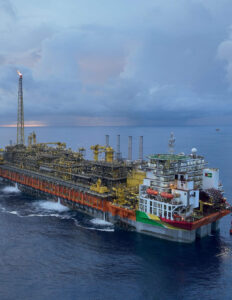ExxonMobil in hot pursuit of more hydrocarbons as Guyana greenlights 35-well drilling campaign
U.S.-headquartered energy giant ExxonMobil has received a stamp of approval for its 35-well exploration and appraisal drilling campaign on the Stabroek Block offshore Guyana from the country’s Environmental Protection Agency (EPA). This will enable the oil major to discover new and re-evaluate existing recoverable hydrocarbons from reservoirs in the block, enabling potential future development projects.

The Stabroek Block is operated by ExxonMobil’s affiliate Esso Exploration and Production Guyana with a 45 per cent interest. The company’s partners in the block are Hess Guyana Exploration (30 per cent), and CNOOC Petroleum Guyana (25 per cent). This block covers 6.6 million acres or 26,800 square kilometres.
According to Guyana’s Environmental Protection Agency, the 35-well exploration and appraisal drilling campaign on the Stabroek Block was approved after the Environmental Assessment Board reviewed and declared acceptable the Environmental Impact Statement and Environmental Impact Assessment (EIA) of the cumulative effects related to this project.
“The EPA is satisfied that the project can be conducted in accordance with good environmental practices, and in a manner that avoids, prevents, and minimises any adverse effects which could result from the activity,” underscored the Environmental Protection Agency.
The objective of this multi-well drilling campaign will be to further explore and appraise the hydrocarbon reserves of the Stabroek Block. The exact locations of the 35 wells have not been finalised. While some of the wells will be drilled for exploration purposes, ExxonMobil explains within the EIA that some of the wells may be drilled as appraisal wells within the proximity of previously drilled exploration areas.
In 2015, oil was discovered in the Liza field within the eastern half of the Stabroek Block. Following that discovery and based on exploration and assessment activities to date, ExxonMobil has identified the presence of multiple reservoirs of crude oil with an estimated recoverable resource of approximately 1.75 billion cubic meters of oil equivalent in the eastern half of the Stabroek Block.
The U.S. oil major points out that the producing Stabroek development projects have brought more than $208 billion GYD (over $1 billion) in direct revenue to Guyana to date. These petroleum operations have created opportunities for more than 4,400 Guyanese workers who currently support activities onshore and offshore, and for more than 1,000 local companies, who have received approximately $146 billion GYD ($700 million) from spending on these projects.
The new drilling campaign is expected to bring further benefits and will use several drillships, similar to the ones currently used for drilling activities in Guyana, to drill the development wells. For each well, the initial section will feature a pipe installed in the borehole and cemented in place. This section will be drilled using water-based drilling fluids, and drill cuttings from this section will be discharged to the seafloor near the well.
On the other hand, subsequent (deeper) sections of the wells are planned to be drilled using low-toxicity NADF with low to negligible aromatic content. The drilled cuttings from the deeper sections will be directed to the drillship, where the drilling fluids will be recovered for reuse to the extent practicable and the cuttings will be treated to limit the percentage of fluid retained on the cuttings. After treatment, the cuttings will be discharged to the sea.
Based on the range and average crew sizes for the fleet of drillships and supply vessels currently operating in Guyanese waters, the offshore workforce would be approximately 175 people on board a single drillship. Some of the drillships that recently drilled new oil discoveries off Guyana for ExxonMobil are Stena Drilling’s Stena Carron, which spudded the Fangtooth SE-1 well, and Noble Corporations’ Noble Don Taylor, used for the Lancetfish-1 well.
Related Article
-
ExxonMobil builds on exploration success off Guyana with new oil discovery
Exploration & Production
ExxonMobil is anticipating to kick off these drilling activities in the third quarter of 2023, and if discoveries are made, well tests may be performed. As the work is expected to take several years, the conclusion of the proposed drilling campaign is expected by the fourth quarter of 2028.
The U.S. giant recently made a final investment decision for the Uaru project in the Stabroek Block and plans to have at least six FPSOs with a production capacity of more than 1 million gross barrels of oil per day online on the block in 2027, with the potential for up to 10 FPSOs to develop gross discovered recoverable resources.








